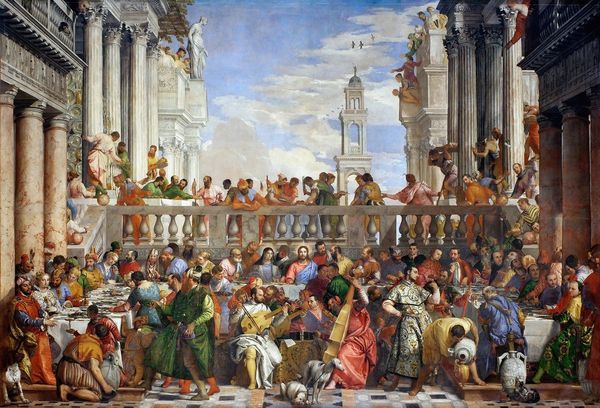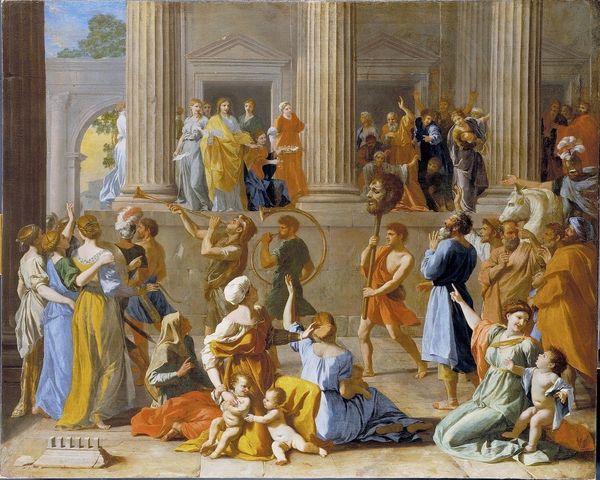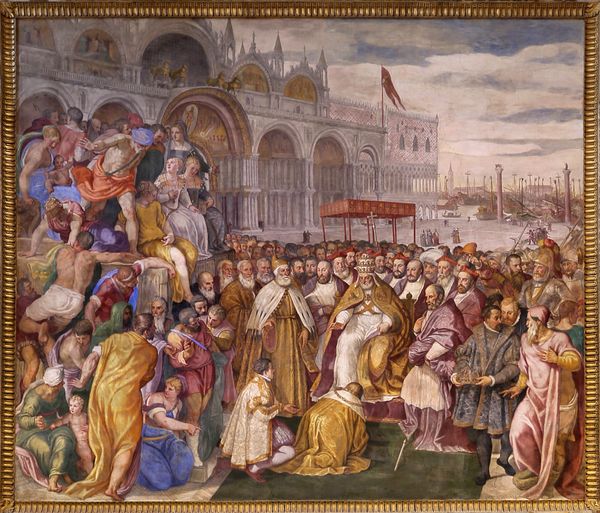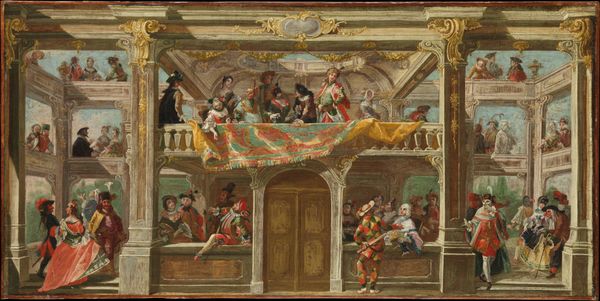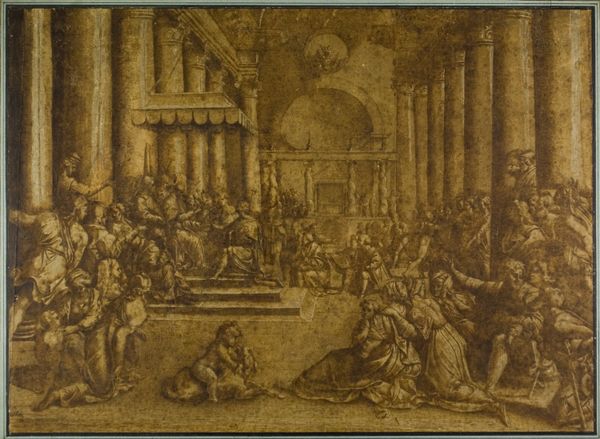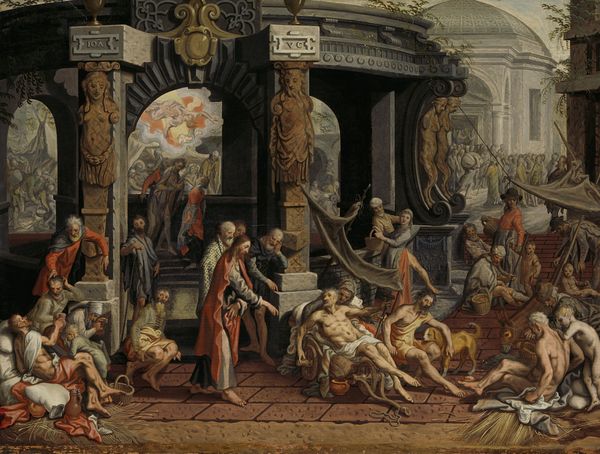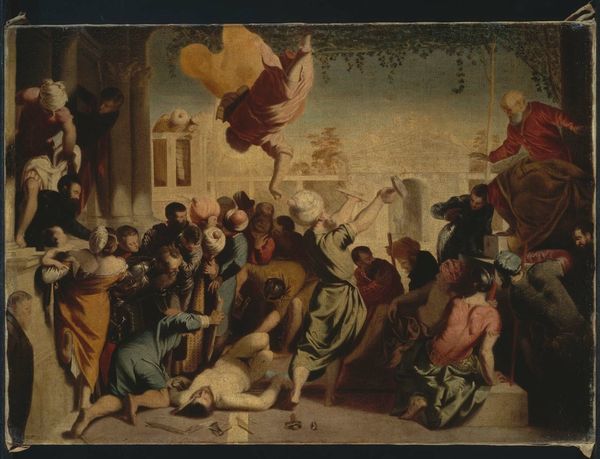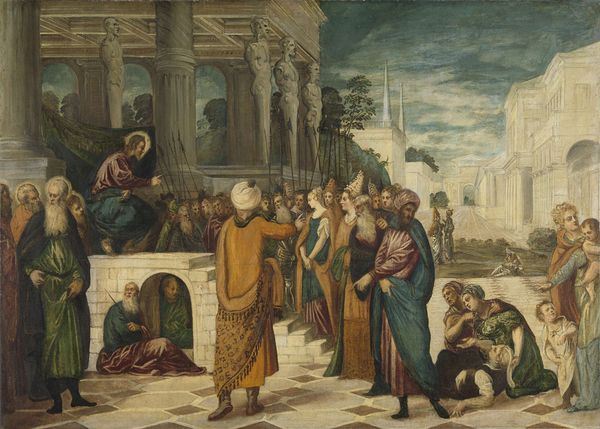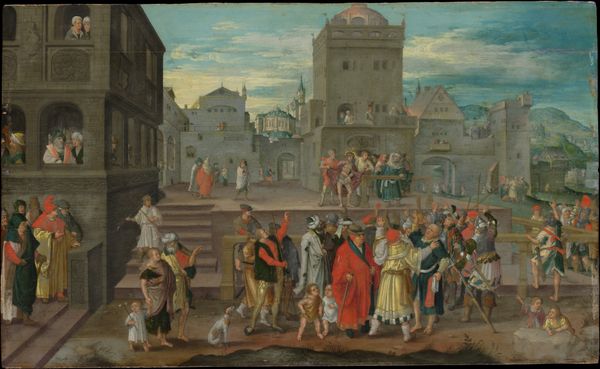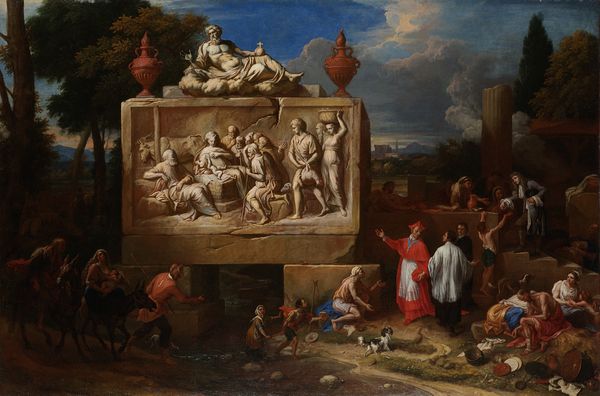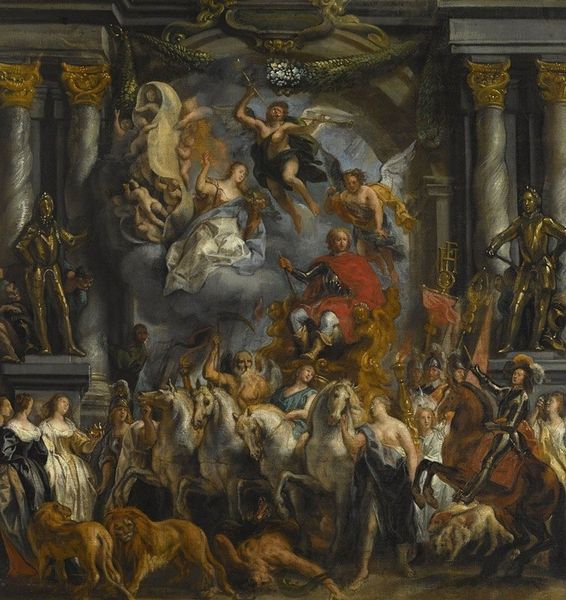
painting, oil-paint
#
venetian-painting
#
narrative-art
#
baroque
#
painting
#
oil-paint
#
perspective
#
figuration
#
oil painting
#
underpainting
#
painterly
#
painting painterly
#
history-painting
#
realism
Copyright: Public domain
Nathaniel Hone the Younger painted “The Marriage at Cana (after Veronese)” at some point in his career, taking inspiration from the famous Venetian master. Hone was part of a vibrant artistic community in late 19th and early 20th century Britain. The original painting by Veronese depicts a biblical scene, but it’s just as much about Venetian society during the Renaissance. The figures are opulently dressed and the scene is set against magnificent architecture that recalls the grandeur of Venice. This reproduction allows us to consider the popularity of the old masters among British artists and collectors. There was a strong interest in art history, and copying the works of great painters was an accepted part of artistic training. Artists looked to the past for inspiration. In doing so, they affirmed a certain set of cultural values and identified themselves within a historical tradition. Looking at the painting in its social context, we can research exhibition records, letters, and other historical documents. These help to uncover the complex social, economic, and cultural forces that shaped its creation and reception.
Comments
No comments
Be the first to comment and join the conversation on the ultimate creative platform.
